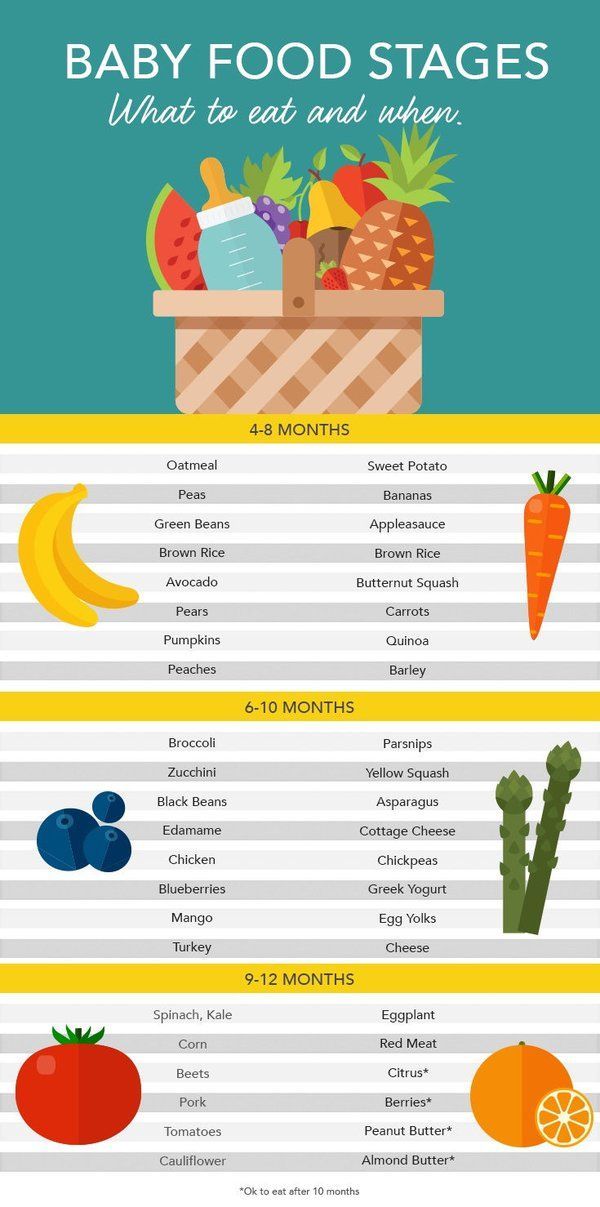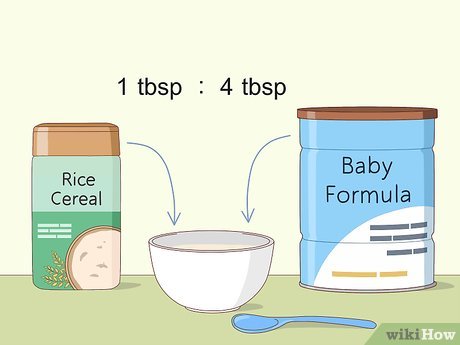Food for 1 year old baby in india
Indian Diet Plan for Toddlers (1 to 3 years)
The best indicator that your toddler is getting adequate nourishment is her regular weight gain, growth, general appearance and contentment.
Thinking of which foods are healthier for your baby will be much easier for you by now, as you will be an expert on which foods your child is best able to cope with. All the foods groups, viz. cereals, pulses, fruits, vegetables and milk are equally important and are extremely healthy for your child.
An adequate amount of these food groups will ensure a healthy growing child. Very few of us really know the intake required by our little toddlers. The daily food guide that follows will help you to know the right amount of food for your child.
1. Cereals and their flours : Whole wheat, unpolished rice, jowar, bajra, ragi (nachni), bulgur wheat (dalia), buckwheat are some healthy cereals which should be included in your toddlers diet. Include at least 5 to 6 servings per day. Use them to make Mini Bajra Oats Uttapa and Multigrain Palak Paneer Roti for Toddlers and Kids.
Mini Bajra and Oats Uttapa
2. Pulses and Dals: Whole Moong, chawli beans, rajma, chick peas (kabuli chana) etc. Sprout them to make them easily digestible for kids and also to get enhanced nutritional benefits. Also include moong dal, toovar (arhar) dal, masoor dal, chana dal, urad dal etc. Their flours like moong dal flour, chana dal flour (besan) etc. also form a part of this food group. Include at least 1 to 2 servings per day. Make their food interesting by serving them Moong Sprouts Dosa and Rajma Salad for Toddlers. Form a habit of family dinner and boost them to eat on their own.
moong sprouts dosa for kids recipe | healthy sprouts dosa recipe | sprouted mung beans dosa for kids | how to make sprouted moong dosa |
3. Vegetables: These include greens like spinach (palak), fenugreek (methi), lettuce, radish leaves, coriander, cow pea (chawli) leaves, colocasia, cabbage etc. Use them to make a small meal like Dal and Vegetable Soup. Other veggies like carrot, beetroot, cucumber, brinjal, French beans, cluster beans (gavarfali), cauliflower florets etc. also form a part of this group. Include at least 2 to 3 servings per day.
Vegetables: These include greens like spinach (palak), fenugreek (methi), lettuce, radish leaves, coriander, cow pea (chawli) leaves, colocasia, cabbage etc. Use them to make a small meal like Dal and Vegetable Soup. Other veggies like carrot, beetroot, cucumber, brinjal, French beans, cluster beans (gavarfali), cauliflower florets etc. also form a part of this group. Include at least 2 to 3 servings per day.
dal vegetable soup for babies and toddlers recipe | healthy dal vegetable soup for kids | moong dal mixed vegetable soup | how to make healthy dal vegetable soup for babies |
4. Fruits: Pineapple, sweet lime, orange, guava, watermelon, mango, apple etc… so many colourful fruits are available. Use a new fruit daily. Include at least 2 fruits a day. If your child doesn’t like whole fruits, serve them in the form of Chana Salad for Kids and Toddlers.
Chana Salad for Kids and Toddlers
5. Nuts and Oilseeds: Almonds, cashewnuts, walnuts, sesame seeds (til), peanuts, dates, figs, apricots etc. Include a few of them for sure. They are a good source of protein and omega-3 fatty acids. Try Til Chikki. Make small pieces and let them nibble on it. Be careful that it doesn’t choke.
Nuts and Oilseeds: Almonds, cashewnuts, walnuts, sesame seeds (til), peanuts, dates, figs, apricots etc. Include a few of them for sure. They are a good source of protein and omega-3 fatty acids. Try Til Chikki. Make small pieces and let them nibble on it. Be careful that it doesn’t choke.
til chikki for kids recipe | til chikki with jaggery | healthy sesame bars | Indian sesame chikki |
6. Dairy Products: These include milk, curd, paneer and cheese. Most kids grown up drinking at least 2 glasses of milk per day. Teach them to include curd in their diet. It is probiotic and good for their digestive system. Serve them chaas in an attractive glass. Use paneer to make Paneer Vegetable Paratha for Kids. Include at least 2 servings per day.
paneer vegetable paratha for kids, toddlers recipe | healthy vegetable paneer paratha for kids | mixed vegetable paneer paratha for kids | healthy vegetable paratha for kids |
7. Fats and Sugar: These are ghee, oil, butter, sugar and jiggery. Although there is no specific recommendation for this group, approximately 2 tablespoons of fat and sugar can be consumed as per your paediatricians advice. Prefer jaggery over sugar in the form of Jowar Golpapdi for Kids.
Fats and Sugar: These are ghee, oil, butter, sugar and jiggery. Although there is no specific recommendation for this group, approximately 2 tablespoons of fat and sugar can be consumed as per your paediatricians advice. Prefer jaggery over sugar in the form of Jowar Golpapdi for Kids.
jowar golpapdi for kids | sukhadi for kids | golpapdi for toddlers
Daily Food Guide for Toddlers
| FOOD GROUPS | Number of servings per day | What makes 1 serving | Suggested Recipes |
|---|---|---|---|
| Cereals and their flours Whole wheat, unpolished rice, jowar, bajra, ragi (nachni), bulgur wheat (dalia) | 5 to 6 servings | 2 phulkas (30 gm)* or 1 chapati (25 gm)* or 1/2 cup cooked cereals or whole wheat pasta (60 to 80gm)* | Mini Bajra and Oats Uttapa, Multigrain Palak Paneer Roti |
| PULSES Whole Moong, lobhia beans, rajma, chick peas (kabuli chana),etc.  Sprouts Moong, rajma, matki etc. Dal Moong dal, toovar (arhar) dal, masoor dal, chana dal, urad dal etc. Flours Moong dal flour, chana dal flour (besan) etc. | 1 to 2 servings | 1/ 4 cup raw whole pulses (35 to 40 gm) or 1/2 cup cooked whole pulses (70 to 80 gm) * or 1/2 cup of raw or cooked dals (70 to 80 gm) * or 1/2 cup of flours (40 to 60 gm) * | Rajma Salad, Moong Sprouts Dosa, Sprouts Khichdi, Mini Mixed Moong Dal Chila |
| VEGETABLES Carrot, beetroot, cucumber, brinjal, French beans, cluster beans (gavarfali), cauliflower florets etc. Leafy Vegetables Spinach (palak), fenugreek (methi), lettuce, radish leaves, coriander, cow pea (chawli) leaves, colocasia, cabbage etc. | 2 to 3 servings | 1/2 cup raw vegetables (50 to 70 gm)* or 1/2 cup cooked vegetables (50 to 70 gm)* or 1 cup raw leafy vegetables (15 gm of vegetables like mint, coriander, fenugreek and 40 to 60 gm of other leafy vegetables ) * or 1/2 cup cooked leafy vegetables (15 gm of vegetables like mint, coriander, fenugreek and 40 to 60 gm of other leafy vegetables ) * | Paneer and Vegetable Paratha, Beetroot and Carrot Raita, Dal and Vegetable Soup, Cheesy Corn and Vegetable Cutlets |
| FRUITS Pineapple, sweet lime, orange, guava, watermelon, mango, apple etc.  Dried fruits Almonds, cashewnuts, walnuts, sesame seeds (til), peanuts, dates, figs, apricots etc. | 2 servings | 1/2 cup chopped fruits (50 to 60 gm) * or 1 big piece of fruit e.g. melon wedge (100 to 130gm) * or 1/4 cup dried fruits. (20 to 30gm) * | Fruity Chana Salad |
| DAIRY PRODUCTS Milk, curd, paneer | 2 servings | 1 cup milk (200 ml) * or 1 cup curds (200 ml) * or 1/4 cup chopped paneer (35gm) * or 1/4 cup grated cheese (35gm) * | Multigrain Palak Paneer Roti, Paneer and Vegetable Paratha, Chickoo Milkshake |
| FATS AND SUGAR Ghee, oil, butter, sugar and jaggery | ** | Although there is no specific recommendation for this group, approximately 2 tablespoons of fat and Sugar can be consumed as per your paediatricians advice. | ---- |
* The weights of all the foods mentioned in the above table are approximate values.
** Fats should be consumed in moderation as some foods like walnuts, sesame seeds and even cereals contain invisible fats which are also a part of our diet. Excessive fat can disturb the absorption of important nutrients like calcium in your little one's body, apart from increasing the risk of obesity later in life.
Other related articles on this :
Major Nutrients needs for Infants and Toddlers
Recommended Daily Allowance for Infants and Toddlers
Guide to Weaning
Best food for feeding Mothers to get more milk
When and how much to feed your Baby
Components of Breast Milk
Recipes for Baby (10 to 12 Months)
We would love to hear from you if you liked the article. Please post your comments. Thanks!
indian diet plan for toddlers (1 to 3 years)
Baby food chart with recipes for 7 months to 1 year Indian baby & toddlers
By Swasthi on August 6, 2022, Comments,
Indian baby food chart along with a list of tried & tested 60 Indian baby food recipes.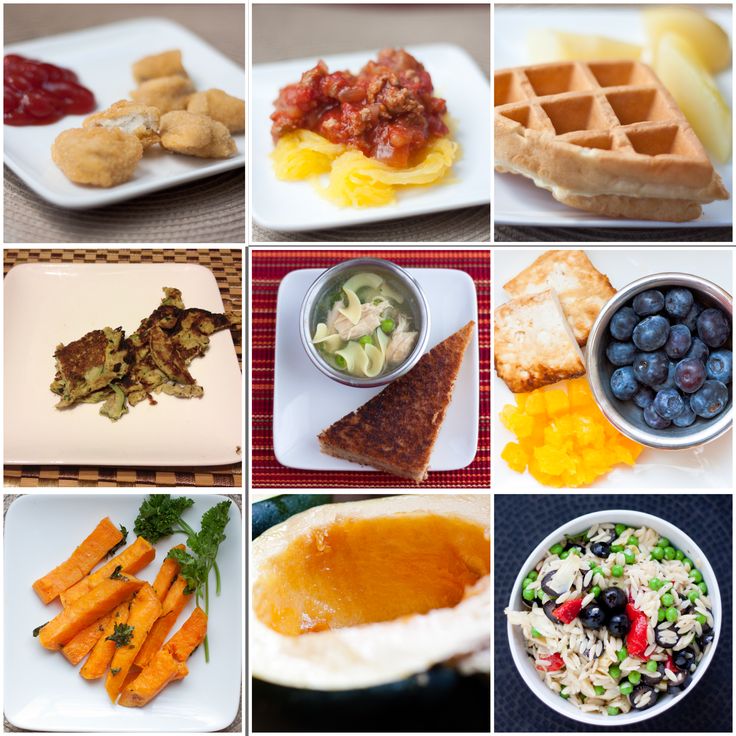 Thanks to the readers who led me to this post on Indian baby food chart. Before I take you to the details of the food chart and the food recipes, please be informed that this post is based on my experience. I have honestly expressed my views and opinions on easy baby weaning so that it could be helpful to new mothers.
Thanks to the readers who led me to this post on Indian baby food chart. Before I take you to the details of the food chart and the food recipes, please be informed that this post is based on my experience. I have honestly expressed my views and opinions on easy baby weaning so that it could be helpful to new mothers.
Please read the comments below before posting your queries since similar queries may have been answered.
Well, some of my tips might look like old wives tales since they are based on Ayurveda, but I do trust them in growing healthy and happy babies. However I suggest consulting your elders or pediatrician before you follow any new foods or tip that have been mentioned here.
For the past several years, I have been consistently sharing & updating baby recipes especially for a good weight gain. You can find all the latest recipes or ideas on the baby toddler recipes section.
Readers who have been asking for suggestions on foods to gain weight, please check this detailed post on best foods for weight gain in babies & toddlers.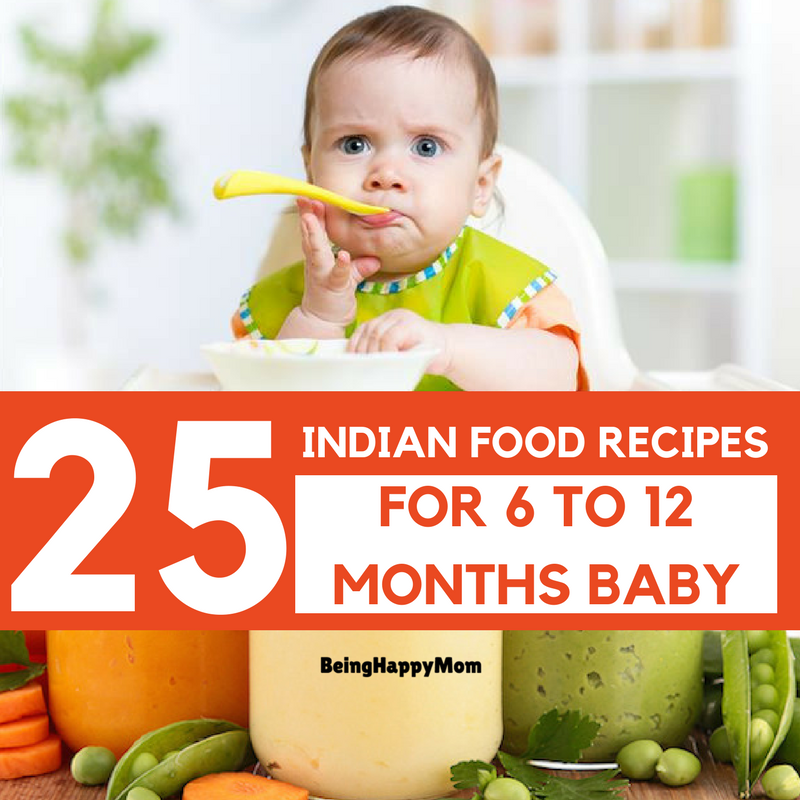
Is this baby food chart suitable to my Baby?
This Indian baby food chart is a generalized one suitable for most babies. However i suggest you to use your judgement whether to include or not, certain ingredients in your babies diet based on your babies allergies, intolerance, appetite, likes and dislikes.
I have tried to link most Indian baby food recipes that I have posted earlier on this blog. Many were written almost 5 years ago and are updated regularly with new tips based on the readers reviews.
This Indian baby food chart was developed by me based on what i fed my 2 kids, whose birth weight was 3.3 kgs and 3.4 kgs. The ideas were basically drawn from the health and baby weaning booklets that were given to us during our visits to the singapore clinics, hospitals and few from clinics in Bangalore.
This chart is also suitable to babies who were preterm born or were underweight. However I suggest mums with such babies to consult a pediatrician if you are skeptical about these foods.
This post will be updated, to include tips and other information. You can leave a comment here if you want to know anything specific which will be answered. Please feel free to share or discuss your experiences, views, problems that you encounter while weaning your babies in the comment section. It could be helpful to other readers, it’s through sharing we can learn.
When to introduce food to baby – 6 months to 1 year
Here is a brief guide on the right time to introduce foods. But how to introduce them can be found in the recipe posts. Example: Oats or oatmeal – I have mentioned clearly how to choose them and the kind you can use and how to prepare it for a baby.
You can find a a detailed baby food chart for 6 months old baby here along with recipes.
This Indian baby food chart and the baby food recipes have been developed for a good weight gain in babies.
Indian baby food chart for babies above 7 months or from 8 months
| Milk – (skip milk if baby wakes up after 8 am, make a milk based breakfast from breakfast section) |
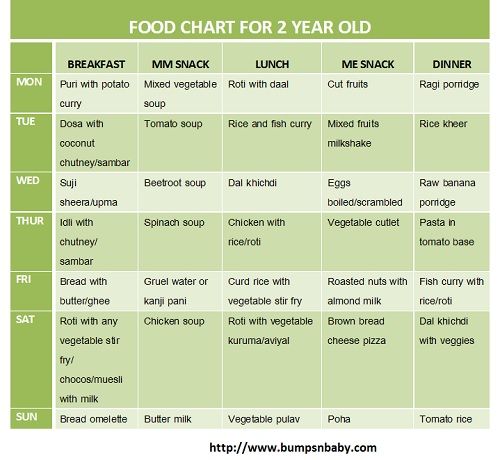 30 to 8 am 30 to 8 am |
| One of the following: APPLE RICE CEREAL Quick fix breakfast (for 8 to 18 months): |
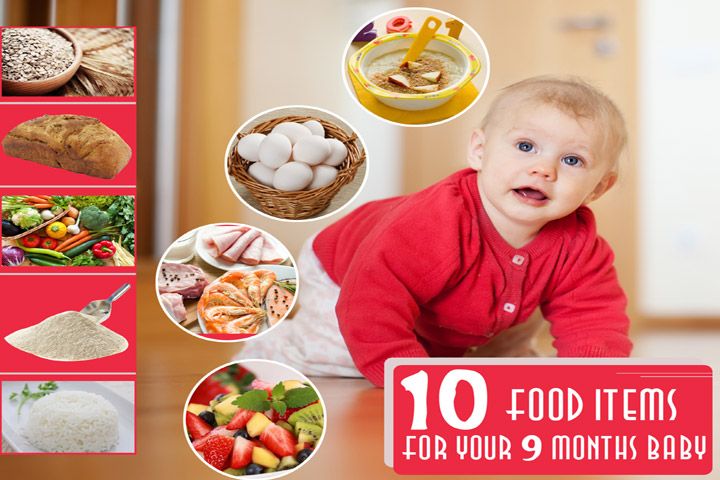 15 am 15 am |
| One of the following: Steamed apple (raw apple for babies older than 12 months) |
| Try using whole grains like RAGI OR FINGER MILLET Try one of the following DALIA KHICHDI (vegetable broken wheat food) For a lighter meal, if the baby has colic mashed rice with dal ka paani with a pinch of ajwain(strained dal soup) |
 30 to 3 pm 30 to 3 pm |
| Fruits or steam cooked mashed veggies |
| One of the following: Large serving of Milk |
| Please Note: Feeding late can cause indigestion and the infant may not sleep due to colic. Avoid feeding heavy foods. Dinner should always be light, nutritious, mostly vegetable based. For babies from 10 to 12 months prefer light foods from breakfast section. Avoid egg & nuts. Babies above 12 months : Any foods mentioned in the breakfast and lunch can also be served for dinner. Other options mashed rice with dal ka paani (strained dal soup) |
| Large serving of Milk. Make sure there is a gap of at least 1 hour 30 mins in between the completion of dinner and milk. For babies above 12 months: If the baby is still hungry after the milk, can feed some light crackers. |
Related post: how to make ragi flour for babies or toddlers’ porridge
Tips to increase the appetite in babies
1. Try to serve fruits 1 ½ to 2 hours before a meal. They tend to make the infant feel hungry naturally. Do not serve fruit with a meal.
2. Do not mix fruits with dairy especially milk. It leads to indigestion.
It leads to indigestion.
3. Babies need exercise, let them play and crawl or run around. Don’t confine them to a small area. For toddlers / babies who can walk, a small walk in the neighborhood before a meal can make them hungry.
General Tips:
1. If you have a very fussy baby, avoid milk in the early morning and serve milk based breakfast mentioned in the table.
2. Serving bread or any other baked stuff to babies, leads to colic or bloating due to the ingredients like baking soda, powder, yeast etc.
3. Limit crackers or biscuits to only once a day, avoiding is however better.
About Swasthi
I’m Swasthi Shreekanth, the recipe developer, food photographer & food writer behind Swasthi’s Recipes. My aim is to help you cook great Indian food with my time-tested recipes. After 2 decades of experience in practical Indian cooking I started this blog to help people cook better & more often at home. Whether you are a novice or an experienced cook I am sure Swasthi’s Recipes will assist you to enhance your cooking skills.
Whether you are a novice or an experienced cook I am sure Swasthi’s Recipes will assist you to enhance your cooking skills.
Follow Swasthi’s Recipes
Sign up to receive awesome Swasthi’s Recipes in your inbox *
Popular Recipes
Featured Recipes
Goa resorts with children
For those who come here with children for the first time, everything usually starts like this.
Ksenia Lobachevskaya blog freelivingAny mother brought up on the ideals of total hygiene and boiling would make her hair stand on end in India. Even I, who, it would seem, had already seen different India, when I got here with a child, at first there was a culture shock - I probably lost the habit in a couple of years. After arriving at night, we settled in the same room as the first time upon arrival in Arambol 6 years ago.
Small, dark, and now also very dirty (obviously, it has never been renovated). nine0003
But then life gradually gets better:
We washed everything and everything there, ourselves and the refrigerator — and finally exhaled. The slow cooker took its place of honor, the stock of food was bought and our first quiet family wintering in Goa flowed like a river. Day after day, month after month.
Whether to go to Goa with a small child is a rhetorical question. Forums explode from discussions. Someone thinks that experiments on the immunity of children are a dangerous business, and such trips are against. Others are sure that unsanitary conditions can be encountered in their native Anapa, and boldly pack their bags. nine0003
But Goa has two weighty arguments that you can't argue with: warm sea and endless beaches. If you have made a choice in their favor, we will tell you in which villages it is better to settle with a baby, is it possible to find cottage cheese and kefir in Goa, is it worth taking a stroller with you and how to place an order in a cafe so that the food is not fiery spicy.
How to get to Goa
Where is it better to live with children
- North Goa
- South Goa
How to feed a child
- Where to buy milk, baby purees and other
- How to feed a child in a cafe
How to entertain children in Goa
What you need to know about medicine in Goa
How to get to Goa
There are three routes to fly to Goa.
Tatyana Solomatina blog otdoxnitetalks about the first option:
Photo by Tatyana SolomatinaDirect charter flights fly from Russia to Goa during the tourist season. Such a flight from Moscow to Dabolim Airport takes about 7 hours. However, the trouble is that it is almost impossible to buy charter tickets during the season. Moreover, if tour operators throw them on the market, it is by no means at a “charter” price. However, this is the easiest way to get to Goa, so it is worth keeping an eye on such offers.
nine0003
It is convenient to get from Dabolim Airport by transfer. Why?
- easy to book and pay online;
- you can order a child seat, booster and even a car seat in the salon;
- the driver will meet and take you to the car. After a tiring 7-hour flight, you simply put the baby in the car and go to your vacation spot, rather than running around the airport looking for a taxi.
The next two ways to get to Goa are to fly to Mumbai or Delhi. If you take a ticket with a transfer in Istanbul or Zurich, you can save a lot. nine0003
From Delhi and Mumbai you can get to Goa by plane, train or bus. In the first case, it will be expensive, By bus - long, but cheap. When traveling by rail, it is important to match the schedule with the time of arrival, as trains do not run at night.
Photo by Tatyana Solomatina ❗You can also get from Delhi to Goa by rented car. You can take it directly at the airport or even at home online. Most importantly, do not forget to indicate in the application that you need a child seat or booster.
Most importantly, do not forget to indicate in the application that you need a child seat or booster.
Where is it better to live with children
Map of GoaGoa is divided into two parts, north and south. You will not find large cities on the seashore, but there are many small villages.
Experienced traveling mothers talk about the difference between northern and southern Goa.
Svetlana, guest at economlegko:
I have been to GOA five times, for a period of two weeks to a month. And always with children, starting from the age of three. For holidays with children, you need to go only to the south. There are no anxious men, no such dirt as in the north. And, of course, there is no entertainment either. Get ready to entertain the kids yourself. And the rest - GOA - it's a great vacation. nine0003
Maryalice13, user otzyv:
If you are a fan of absolute seal rest and complete relaxation, if you do not get tired of eating in the same restaurant, if you are a champion of one hundred percent cleanliness and order, then you should definitely choose one of the hotels in the south of Goa.
We rented a motorbike and rode up north for fun. I can’t say that the distances there are gigantic, but you still can’t run into a child, so this time I knew for sure that we would go to the north of Goa. nine0003
Site author indianochka:
If you need peace and beautiful nature, then welcome to South Goa. But you will most likely not see any fun holidays and unusual people here. North Goa is saturated with the color of a mixture of cultures, noisy youth, the atmosphere of an eternal holiday, but the beaches and hotels here are objectively worse.
❗ The stroller is only needed to move around the airport. It will be difficult with her in Goa, because there are no sidewalks and good roads. nine0003
North Goa
Arambol
In Arambol you can stay in a guest house, rent an apartment or find a bamboo bungalow right on the seashore. True, in the latter case, you will have to live without hot water and a kitchen.
There are many cafes and restaurants in the village.
Alexander and Natalia blog "Life with a dream"tell where in Arambol you can feed the whole family with borscht or dumplings:
For those who miss Russian cuisine, there is Pirozhki cafe. It is located 3 minutes drive from Arambol towards Mandrem on the right side. Stylized as a simple garage, to the melodies of Soviet songs, you will be fed with borscht, dumplings, dumplings, pies and compote. Everything is exactly like in Soviet times. nine0003
You won't be able to relax on the main beach in Arambol. And here's why:
If you walk towards the Mandrem beach, you will find quiet and suitable places for swimming.
Mandrem
The quietest area in the north of Goa. At this resort, you will not suffer from noisy night parties under the windows. The beach here is one and a half kilometers long. The entrance to the sea is gentle, there are no big waves. There are vegetable shops and grocery stores.
There are vegetable shops and grocery stores.
One of the minuses of the village is its remoteness from the sea. On a bike, you can drive to the nearest beach in 5 minutes or walk for 30–40. In addition, bloggers note that the houses here are very dark and the light has to be turned on even during the day. nine0003 Site photo goavilla
Mandrem is popular with tourists, it is better to book accommodation here in advance.
Morjim
If you are afraid of the language barrier, go to this village. Many tourists from Russia rest here, and in the cafe you can easily order lunches from the Russian-language menu. True, prices here are higher than in other villages of North Goa. But there are also fewer tourists. In addition, if you rent accommodation in advance, you can save a decent amount.
An additional argument in favor of Morjim is a three-kilometer beach with fine sand and a gentle entry into the water. nine0003
Maryalice13 with otzyv vacationed in Morjim with a 3-year-old child and shares advice on where to swim:
If you are facing the sea, then on the left the beach strip is narrower, where rolling waves flood the first row of sun loungers, not entirely, of course, but somehow it's not very cool.

On the right, on the contrary, you have to cut 20-30 meters to the sea. We spent time here. The child calmly dug in the dry sand, not fearing that his toys would be carried away by the oncoming wave. And if the daughter wanted to run along the beach, we had no fear that she would somehow accidentally end up in the sea without us. nine0003
❗There is even a kindergarten here. Babies from one and a half years old can be left for several hours or a whole day.
Kerim
Polina spent the winter in Goa with her husband and a one-year-old child. On the detkitur website, he tells what is good about Kerim and what are his disadvantages:
North Goa's latest beach, surrounded by pine trees that provide amazing shade. It is very sparsely populated and more one feels unity with nature. And here is the only equipped embankment: you can walk along the sea along the asphalt alley in the shade of tall trees, sit in the little squares by the sea on the benches.
But Kerim has a very steep entry into the sea and a narrow sandy strip. Our child almost did not swim, mostly played near the sun loungers in the shade of the canopy. At the very beginning of the beach there are several cafes, all of them without a shower. nine0003
You can rent accommodation in Kerim on the spot, but with a child it is better to rent it in advance.
❗Where you don't have to go in North Goa , says the same Maryalice13 with otzyv:
For holidays with children, I do not recommend choosing the following beaches - Candolim, Calangute, Baga, Anjuna and Vagator. I don’t recommend it for the following reasons: on some of them, rather sharp stones complicate entry into the water, and algae come across (my child categorically refused to enter the water when he saw algae, “dirty water” and that’s it), these beaches are popular with the Indians themselves that does not add to their purity. nine0003
South Goa
Majorda
This area includes 11 villages.
Pavel Laputskov on travelask advises where to find the best beach:
Photo by travelaskGeographically, the settlement of Majorda includes three beaches - Utorda, Majorda and Colva. The last beach is considered the most popular among locals and Indian tourists, so it is always noisy, crowded, and sometimes dirty. For relaxation, it is best to choose Majorda Beach or Utorda. These two beaches have amazing sand, there are several seks where you can have a delicious meal, and it is also not very crowded. nine0003
There are many accommodation options in Majorda, it is better to book a hotel or apartment online even before the trip.
Benaulim
Iskra website MAKE-TRIPtells what will attract this village:
Photo courtesy of new-travelerBenaulim has a relaxed atmosphere. The main contingent of vacationers are Russian tourists and Europeans of retirement age. There are no noisy clubs, but there are small cafes. Life here starts early and ends early too - by 19:00 everything is already closed.
The nearest shops and other benefits of civilization are in the neighboring villages of Margao and Colva. nine0003
As in other resorts, it is better to rent accommodation in Benaulim in advance.
Palolem
Pavel and Alexandra Volkov website travel4live.rustayed at this resort for a month, and here's why:
We traveled all over the state and from the resort areas we liked South Goa the most, namely, the Palolem area - the cleanest, calmest and most picturesque part of the resort state. The beach here is the most pleasant, the water is clean, good infrastructure. nine0003
Accommodation in Palolem can also be rented online.
Photo from the site Forum Vinskogo
How to feed a child
Where to buy milk, baby purees and other
In stores you will find the usual flour, oatmeal, rice, semolina and pasta. There will be no problems with milk and sour milk either: there is sour cream, yogurt, milk and cheese.
Natalia Lyubimova tells how things are in Goa with baby formula and canned puree:
Artificial nutrition (mixtures) is available in pharmacies. I have not seen canned purees, and there is no need for them. A blender costs 700 rupees (350 rubles), there are more sophisticated ones for 1000-1500 rupees. Vegetables and fruits most suitable for mashed potatoes are zucchini, cauliflower, broccoli, potatoes, carrots, avocados, etc. Fruits - papaya, mango, watermelon, bananas - great for kids.
How to feed a child in a cafe
Forum member Maryalice13 recalls that there were no problems with baby food in the cafe:
Almost all cafes have porridge on the menu, simple oatmeal, either with fruit (there are many fruits in it), or with banana, rice porridge, pancakes with various fillings. Everything is delicious! The child ate with pleasure. We dined, as a rule, in cafes on the beaches. There you can safely order chicken soup or soup with seafood (if the child eats it), most importantly, specify what it is for the child and ask to do not spicy.
A separate topic is the local Naan flatbreads, they are of several types, with garlic, garlic and cheese, etc., they can be eaten endlessly! Very, very tasty! The daughter ate by herself and fed the beach dogs.)
Inna Cherepanova, the author of economlegko, doesn't have such a rosy idea about catering in Goa:
In Goa, food adapted for tourists, there is a cafe with Italian, Russian, American cuisine. But as soon as you move a little further from the central beaches, the problems of “what to eat” begin. My husband and I on trips calmly, and sometimes with pleasure, ate at local eateries. Tali and dosa - and no diarrhea! The main ingredient is rice. And if the child does not like rice? You won't have to travel far from the tourist spots. Someone would not really want to, but we always like to climb into remote or simply unbeaten paths for tourists. If rice goes well with your children, you will not be lost in India. nine0003
She also warns:
Never drink water in jugs.
In Indian eateries, jugs of drinking water are always served. This is included in the price of the order. All the locals drink. I do not advise you. And don’t let a child near these jugs at all! Dysentery can be easily caught.
How to entertain children in Goa
Here are some places of interest for children:
- Bigfoot Museum
- Cotigao Nature Reserve
- Anjuna Water Park
- Goa Aviation Museum
- Aguada Fort
- Redi fort
If you want to dilute your beach holiday with excursions, you can go crab fishing on the Nerul River with the whole family under the guidance of a Tripster guide.
What you need to know about medicine in Goa
In order not to overpay for the services of doctors and medicines in an unfamiliar country, be sure to buy medical insurance for the whole family. Keep all receipts and checks - then show them to the insurance company for reimbursement. nine0003
nine0003
Catch a discount! With promo code TRAVELBLENDER2020 , insurance will come out 10% cheaper than .
Tatyana Solomatina recalls how she called the doctor to her son, who had a high temperature on vacation:
Photo from explore-knowmoreLess than half an hour later, a shiny new local ambulance drove into the area. The car was really cool, fully equipped inside (specially looked when seeing off the doctors).
Two people entered the room, as I later realized - a doctor and a nurse. Both are young, about 30 years old, with a smile conducive to communication. They wiped their hands with alcohol wipes that they had with them. The doctor carefully examined the child. They spoke in English. The diagnosis was poisoning, they left six local preparations: for fever, absorbents, antibiotics, enzymes for the stomach, some kind of powder, such as rehydron and vitamins.
The temperature dropped in the evening and did not rise again. nine0003
Ksenia Lobachevskaya talks about her acquaintance with a pediatrician:
The nearest clinic accepting insurance policies turned out to be in Mandrem - Sofiya Clinic. And during this season we got to know her doctor Dr.Ravinder Singh Chhikara. He made a quite good impression, he knows a little Russian, he is ready to meet, he goes to the house. A visit to his clinic costs 500 rupees, a home visit costs 2,000 rupees. Our insurance paid off. Prescribes a list of medications. Antibiotics do not recommend, but do not delay. Almost all medicines can be dispensed on the spot. In general, medicines in India are very affordable and, according to reviews, are of very high quality (fakes are rare). nine0003
What to watch out for
Snakes
There are 5 types of venomous snakes in India. There is an antidote, but you need to have time to see a doctor. Tell your child not to touch snakes.
Tell your child not to touch snakes.
Jellyfish
The same applies to jellyfish. You can not touch them: there will be a burn. If contact does occur, take the child to the doctor at a run.
Drinking water
Do not drink or cook with tap water. Ask at the bar not to put ice in your drinks. nine0003
Have a good trip!
Mothers from different countries of the world told us what they usually feed their children with / AdMe
62197857It is important for many parents to teach their child not only how to interact with the outside world, but also how to eat. After all, mom and dad are responsible for the health of their children and must instill in them an understanding of what food is of high quality and what is not. But it turns out that far from all over the world people care about giving the best to children. Perhaps because for each person the best is something very different, and sometimes even the exact opposite. nine0003
At ADME , we thought about this philosophical question and decided to ask mothers from all over the world what food is considered appropriate for children in their country.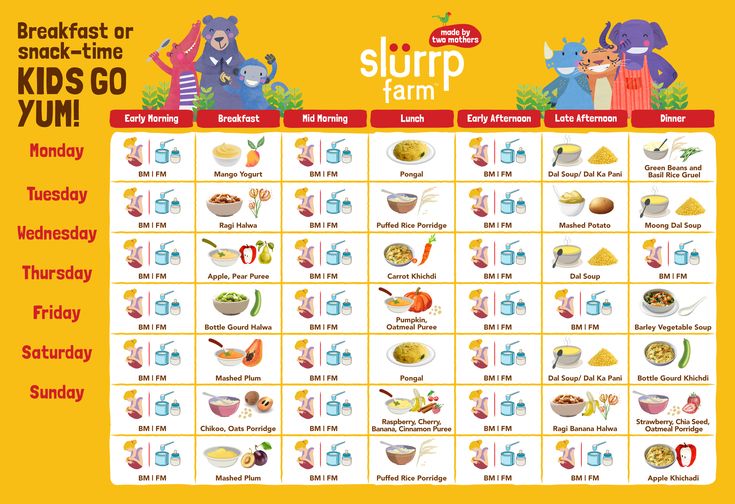
Turkey
- With an abundance of vegetables and fruits, children in playgrounds are often fed salty sticks, chips, etc. From infancy, children are often given cola to drink. From the year they start giving snacks. It happens that soda is even poured into bottles for one-year-old children.
© Maxpixels
- In Turkey, any food served at home is considered healthy. Children eat spicy food from early childhood. At school or in the garden, the usual snack is a packaged juice, milk and a muffin or a roll. Any meal usually ends with sweets.
- At every meal, all family members, including children, eat a lot of bread (airy Turkish loaves). One family takes 4 or more loaves for one meal. They also eat a lot of peppers, greens, beans, bulgur, rice and pasta. With any food, they definitely drink ayran. Lots of baked goods everywhere. nine0026
Israel
- In the middle of the week, children often eat convenience foods and pizza, as does the whole family.
 At school or in kindergarten, the child is mainly given sandwiches - on Fridays with chocolate, but usually with white cheeses or hummus. In addition, a lot of vegetables and fruits.
At school or in kindergarten, the child is mainly given sandwiches - on Fridays with chocolate, but usually with white cheeses or hummus. In addition, a lot of vegetables and fruits.
© akg-images / Israel Talby / Eastnews
- Municipal gardens serve scrambled eggs and tomato and cucumber salad in the morning, bread with hummus or tuna for a snack, and less often chocolate spread. nine0026
- Not so long ago semi-finished products were banned in children's institutions and hot meals are served. In the state gardens, they serve sandwiches with tuna, soft cottage cheese, but they also make omelettes, and in winter, the nanny cooked soups in her son's garden. Children bring pita with hummus, vegetables, schnitzels to school, some bring sushi. Recently, parents began to give their children different foods to take with them. Schools are encouraged to give vegetables and fruits, sweets and sugary drinks are not allowed , only water. Here they make sure that children drink plenty of water.
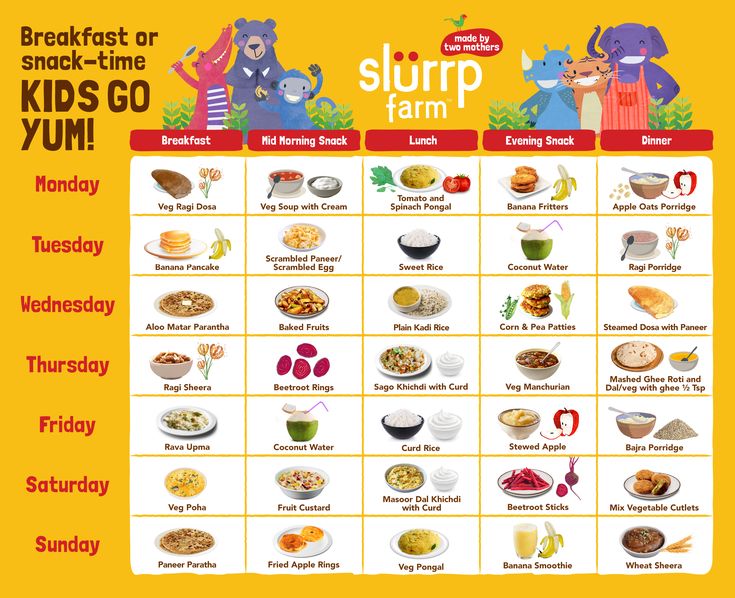 nine0026
nine0026
Poland
- Breakfast in kindergarten is traditionally sandwiches with pate or curd mass. True, for sure they will still give fruit. For lunch, most likely, there will be soup and a second, and for an afternoon snack you can again refresh yourself with sandwiches. At home, ordinary food - soups, cereals, meat in all forms.
Italy
- Children eat pasta from various cereals with vegetables and legumes, risotto, soups. More focaccia, pizza, fruit, eggs. Eating here is a small event every time. Children love to talk about food and go to cafes. nine0026
© @good_citizen / Unsplash
- The restaurant may serve French fries and sausages during the celebration, this is considered children's food. Soups in Italy are almost never eaten, there is broth with tortellini or minestrone, but only in winter and not often, cereals are rarely found here, except perhaps rice and polenta. It is important for Italians that the child eats pasta, meat, fish and dairy products.

- Pasta with beans or chickpeas is popular: it is cooked throughout Italy and is called the protein dish for the poor. And of course, the feature of the Abruzzo region is arrostichini, lamb skewers. nine0026
United Kingdom
- Sandwiches are served at home and sandwiches are given to take away. No one really thinks about which foods go well with each other and which do not: tangerines, pineapples and other fruits with milk can easily be given in the garden.
- At school, children are given yogurt, a sandwich and some kind of dessert (jelly, muffins, usually everything from the store). No soups or eggs. In schools - milk with fruit, for lunch there can be pizza, macaroni and cheese, baked potatoes. nine0026
- Children are usually fed with sweet cookies and cakes, for breakfast they are given sweet corn flakes from a box, it is in the order of things to feed the child with chips (it's good if they are for children, there is less salt, and often the usual ones are given).
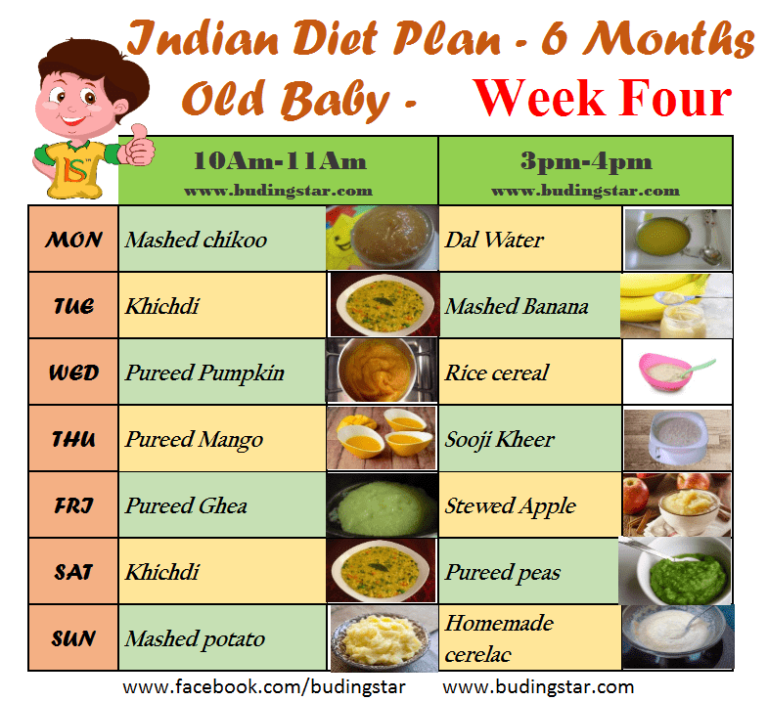 Sausages in dough, sandwiches, sweet drinks. There are kindergartens where they ask parents to give their children healthy food or prepare hot meals for children: pasta with bolognese, baked chicken and vegetables, chicken with curry and rice, etc. Of the soups, only puree soups are eaten, but at school this is not give. nine0026
Sausages in dough, sandwiches, sweet drinks. There are kindergartens where they ask parents to give their children healthy food or prepare hot meals for children: pasta with bolognese, baked chicken and vegetables, chicken with curry and rice, etc. Of the soups, only puree soups are eaten, but at school this is not give. nine0026
Germany
- Breakfast and dinner are mostly sandwiches. Soup is considered a dish for the sick - this is what is eaten when it is bad.
- The Germans practically don't cook at all: bread for breakfast and dinner, lunch in the garden, at school or at work. In fact, lunch is the only warm meal of the day.
- All kids love pretzel: it replaces any snack.
© Maxpixels
- In Germany, a hearty lunch is more important, and sandwiches are often eaten for dinner. In the gardens they give simple food for lunch: boiled vegetables, rice, lentils, wheat flour are replaced with spelled.
 They also like to give children raw chopped vegetables for a snack, such as carrots, cucumbers, paprika, cherry tomatoes. Porridge is more likely to be given to the smallest, although many people also eat oatmeal for breakfast. nine0026
They also like to give children raw chopped vegetables for a snack, such as carrots, cucumbers, paprika, cherry tomatoes. Porridge is more likely to be given to the smallest, although many people also eat oatmeal for breakfast. nine0026
Latvia
- Proper nutrition and a healthy lifestyle are very fashionable right now. In the kindergarten, children always have porridge in the morning, soup and a second for lunch. Different things for an afternoon snack: they can give a sausage or a bun, cottage cheese, an omelet. They are very careful about the consumption of sugar and salt - they put them to a minimum.
Malaysia
- Children start eating spicy early enough, everyone eats a lot of rice. People do not understand at all how one can live without a rice cooker at home. Soups are eaten as a main course: they are usually with noodles, vegetables, tofu and fish/shrimp/meat. nine0163 They drink water as if everything in life depends on it: all the problems are because they "drank little water.
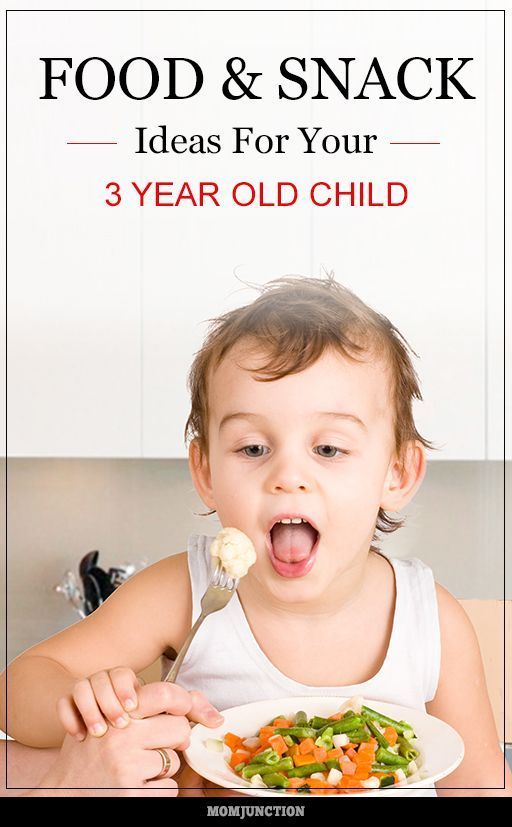 "
"
Bulgaria
- In Bulgaria, in the morning, children are given local pastries - bannitsa, or banichka, as the Bulgarians affectionately call it. This is a puff pastry in which cheese is wrapped. Also, a traditional breakfast is sour milk: similar to yogurt, but more sour, with a bifidus stick, which can only exist in this area. To sour milk they give a white yeast bun. nine0026
© Maxpixels
- For lunch, they often serve kyuftenets - small cutlets with spices. From meat they eat chicken and pork, beef is a rarity. Pasta, rice and, of course, potatoes in all forms. There is a children's kitchen where they make sweet milk desserts with starch. Schoolchildren constantly eat buns, sausages, pizza and chips.
Argentina
- Children are not very well fed here: almost no one has breakfast, they can eat toast, cookies with jam or white cheese like thick sour cream, for lunch they give some kind of chop sandwich.
 The main meal in Argentina is dinner, when the whole family gets together. At the table there can be pasta, pizza, pies, almost always something with meat. Many children drink Coca-Cola and other sugary sodas. They don't seem to know about porridge in Argentina. Soup is prepared only for the sick or sometimes in winter. nine0026
The main meal in Argentina is dinner, when the whole family gets together. At the table there can be pasta, pizza, pies, almost always something with meat. Many children drink Coca-Cola and other sugary sodas. They don't seem to know about porridge in Argentina. Soup is prepared only for the sick or sometimes in winter. nine0026
India
- Under total vegetarianism, children are fed everything: chocolate chip cookies without problems, rice and legumes from birth, fried vegetables and any food plus a lot of spices.
- Coconuts and coconut water in the form of any snack is very useful, especially in the climate and country specifics. Here, children are fed with rice of different types and varieties. Desserts are made from rice and rice flakes.
Finland
- Breakfast in the kindergarten and at home is usually the same: porridge, cereal, sandwich, juice or milk. Soup is often served for lunch in the garden, and yogurt or jelly plus a sandwich or a bun for an afternoon snack.
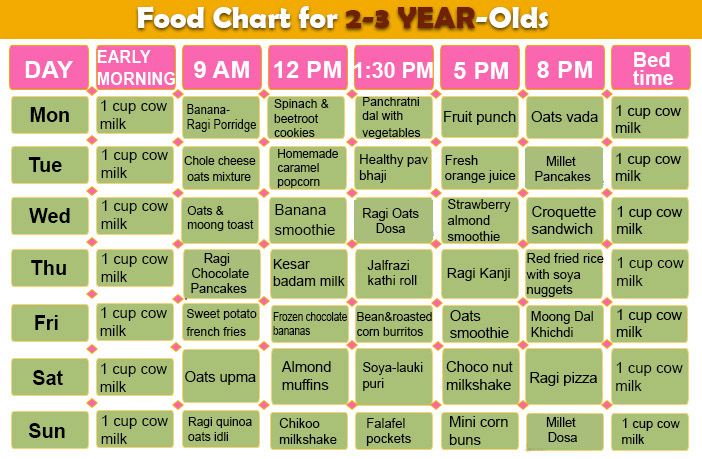 Finns bake a lot, eat a lot of bananas, berries, bread, salad. Sometimes they give sausages, no more than once every 10 days (nurse's recommendation), but sausages here are 93% meat. Pizza, tacos, french fries are rare. Sweet day only once a week , and liquorice is one of the sweet things.
Finns bake a lot, eat a lot of bananas, berries, bread, salad. Sometimes they give sausages, no more than once every 10 days (nurse's recommendation), but sausages here are 93% meat. Pizza, tacos, french fries are rare. Sweet day only once a week , and liquorice is one of the sweet things.
© Maxpixels
- Families often hunt and fish, so game, elk and fish are often on the table. There is a certain meal for each holiday. For Christmas - baked turnip puree, carrots with rice, sweet potato. Be sure to have pork ham, salad type vinaigrette. But wild mushrooms are rarely eaten - they are afraid.
Montenegro
- Here they mainly eat chorba (but not every day), sandwiches, polenta, they also buy semolina for the smallest. Lots of legumes, lamb, burek and yogurts. But in general, they don’t really follow the usefulness of food, there are also a lot of sausages and fries.
Uzbekistan
- In average families, a child is given tail fat from a diaper instead of a pacifier.
 Meat - lamb from the moment the child is accustomed to the table (4 months). For the most part, when a child has teeth, they are fed the same food that they themselves eat, just in smaller quantities. Children eat pilaf on a fat tail with lamb, manti, khanum, khasyp, cakes with kaymak for breakfast, tea with novaat (burnt sugar) - also from about 4-6 months. The main meat of the population is lamb, and cooking oil is the same melted fat tail fat. nine0026
Meat - lamb from the moment the child is accustomed to the table (4 months). For the most part, when a child has teeth, they are fed the same food that they themselves eat, just in smaller quantities. Children eat pilaf on a fat tail with lamb, manti, khanum, khasyp, cakes with kaymak for breakfast, tea with novaat (burnt sugar) - also from about 4-6 months. The main meat of the population is lamb, and cooking oil is the same melted fat tail fat. nine0026
© DINARA MAKESHEVA / Eastnews
- Candied sweets, lots of baked goods are the norm for Uzbek children. Sweets are flour drenched in honey, whites whipped with sugar, sprouted wheat boiled in a large amount of sugar. There is no proper nutrition as such, many people suffer from diseases of the gastrointestinal tract and liver.
Azerbaijan
- One of the indicators of caring for a child is to ensure that he is well and well fed. For this, they will arrange dances with a tambourine in one hand and gadgets in the other.
 Traditionally, there is a lot of fatty food here. Meat - barbecue, kebab, a lot of vegetables. For breakfast, as a rule, children are given cheese, sweets, hot bread with butter. nine0026
Traditionally, there is a lot of fatty food here. Meat - barbecue, kebab, a lot of vegetables. For breakfast, as a rule, children are given cheese, sweets, hot bread with butter. nine0026 - Lately there is a lot of fast food, everywhere children chew hamburgers, french fries and wash it all down with cola. In general, there is a cult of sweet carbonated drinks. Not a single event is complete without them, and even more so for children. There are a lot of overweight children. But grandmothers and mothers still constantly try to shove more and more into the child. It is believed that a full child is healthy and strong.
- There are no canteens in public schools, there are just stalls selling crackers, chips, and sweets. Some parents give money to their children, and they buy food at school, others wrap food to go. But, as a rule, this is not a healthy snack, but something baked, sometimes a cutlet, chicken or sausage. nine0026
Japan
- The Japanese believe that onigiri (stuffed rice balls wrapped in a nori sheet), rice with natto (fermented beans, which seem terrible to foreigners, but they are very healthy and nutritious).

- Breakfast can be sandwiches, eggs, or more traditional rice, fish, salad, miso soup. In schools and kindergartens, they also try to have a complete diet: vegetables, fish and meat. They try to accustom children to unloved foods. Drink milk regularly. Dinner depends on what the family prefers: usually a lot of vegetables, some meat or a piece of fish, miso soup. nine0026
Canada
- In Canada, children go to school from the age of 4. This is the same garden, but located at the school. They introduced a healthy snack program: in the morning, children are given apples, yogurts, whole grain snacks, and vegetables. But in fact, almost everything remains untouched: children do not eat it.
- The most common and favorite breakfast among Canadian children is a sandwich with jam and peanut butter or corn flakes with milk.
© Maxpixels
- Canada has such a multinational society that, in fact, there is no Canadian food among children, in general.
 Koreans, Arabs, Indians, Chinese, Russians, Canadians can study in one class. Everyone eats what they usually eat at home: someone eats shawarma with meat and vegetables, someone eats Korean sushi, someone eats pita with hummus and vegetables, and someone has a sausage sandwich. And everyone shares with each other and tries, even though it is forbidden by school rules.
Koreans, Arabs, Indians, Chinese, Russians, Canadians can study in one class. Everyone eats what they usually eat at home: someone eats shawarma with meat and vegetables, someone eats Korean sushi, someone eats pita with hummus and vegetables, and someone has a sausage sandwich. And everyone shares with each other and tries, even though it is forbidden by school rules.
Egypt
- Children usually get food from the common table along with their first food. Local cuisine is often fatty, fried. Children very early start eating chips and drinking Pepsi. They may not yet be a year old, and the guests bring with them a bag of this kind of gifts for the baby. The school lunch box also often consists of unhealthy snacks or sandwiches. Some families try to buy healthy food for their children, but on the beach, out of 10 Egyptian children, 7 will definitely be chewing chips with a fanta.
Taiwan
© @adriensala / Unsplash
- They don't bother much about breakfast: usually it's a glass of milk (cow's or soy) and what the child likes: a bun, toast with jam, an omelette.
 For lunch and dinner, there must be 4 components: protein food - meat and tofu, egg dishes, a lot of fish and seafood; vegetables - there should be several types, including greens. Often, food is prepared from algae such as seaweed. The third part is carbohydrates: usually rice or noodles. And the fourth is a broth with pieces of meat and roots. There is all this at lunch in kindergarten. For an afternoon snack - fruit. nine0026
For lunch and dinner, there must be 4 components: protein food - meat and tofu, egg dishes, a lot of fish and seafood; vegetables - there should be several types, including greens. Often, food is prepared from algae such as seaweed. The third part is carbohydrates: usually rice or noodles. And the fourth is a broth with pieces of meat and roots. There is all this at lunch in kindergarten. For an afternoon snack - fruit. nine0026 - Parents have been trying to teach their children to eat more vegetables since childhood. They are very limited in sweets, trying not to initially accustom them to it.
Bolivia
- In Bolivia, both children and adults are very fond of soups, they often have them for breakfast. Even in the morning there can be a fruit salad (there are a lot of fruits), sandwiches or fried pies. For lunch there should be soup and the second. In general, dishes almost always contain meat, but it would be wrong to call food varied. For dinner, some kind of fried chicken is often eaten.



